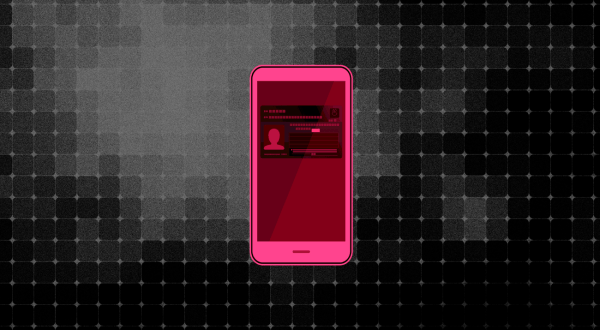

Jim Barna
Chief Engineer, Ohio Department of Transportation
DriveOhio
DriveOhio brings together those who are responsible for building infrastructure in Ohio with those who are developing the advanced mobility technologies needed to allow our transportation system to reach its full potential. Ohio is already on the leading edge of research, development, testing and deployment of connected and autonomous vehicle technologies. The concentration of automotive and advanced sensor engineering, manufacturing and R&D talent in Ohio is second to none. Some of the worlds foremost automotive researchers are already working in Ohio. In fact, Ohio already has six smart mobility projects in the works, four smart roads covering 164 miles and two smart city pilots, with several more projects under development.
DriveOhio is a single point of connection for the smart mobility industries (automotive, technology and data) to work with researchers and government officials on the next generation of advanced transportation technologies. It would accomplish this by acting as one-stop-shop for anyone looking to test or build smart mobility technologies in Ohio and will prepare the state for the next generation of transportation infrastructure.
The ultimate goal of these smart mobility projects is to move people and goods safely and more efficiently from place to place. In 2016, there were more than 300,000 crashes on Ohio roads; 94 percent of those crashes were caused by driver error. Research indicates that 80 percent of those crashes could have been avoided or mitigated with advanced mobility technology. The deployment of this technology could save hundreds of lives and prevent thousands of serious injuries on our roadways.

Debra Lam
Managing Director, Georgia Institute of Technology Smart Cities and Inclusive Innovation
Georgia Smart Communities Challenge
The project is the GA Smart Communities Challenge. The hope is not so much the technology per say, but to be able to showcase that smart community development can happen at all scales and types of communities. We hope to highlight the many types of partnerships and use cases that can serve as references for others. There is still much work to be done to make smart communities for all. We are excited to open up the opportunities and learning.

Dave Fletcher
Chief Technology Officer, State of Utah
Google home skills
This particular project is part of Utah’s effort to use digital assistants to provide services and information for Utah citizens. In this case, we leverage the Google Drive platform to provide an interactive way to prepare for the Utah Driver License exam.
The targeted market for this innovation is typically 14- to-25-year-olds who are interested in getting their driver license for the first time, although there are others outside this targeted segment that are interested in the service as well. The Google Assistant is a voice interactive system that is available on most mobile devices as well as the new Google Home and Google Home Mini devices. Similar to the popular Amazon Alexa, Google Assistant interacts with the user through standard voice interactions. With this application, the user simply asks to take the Utah Driver License Practice Exam after which the Assistant will ask a series of questions resembling those that will be asked on the official Utah Driver examination.
It is a simple and fun way to prepare for the exam;37,000 students are eligible to apply for new Driver Licenses each year in Utah.
The Google Assistant was unveiled during Google’s developer conference in May 2016, during the announcement of the Google Home smart speaker. Its forthcoming availability for Android and iOS users was announced in May 2017.
We believe that the Utah Driver License Exam is one of the first government applications available for this new, but increasingly popular platform.

Jim Fiore
Director, Pennsylvania Bureau of Vehicle Management
Vehicle fleet telematics
The Bureau of Vehicle Management (BVM) is in the process of installing telematics devices in more than 5,000 passenger vehicles. This technology will enable BVM to manage its fleet in realtime, compared to monthly data that is currently reported. The telematics data will provide accurate mileage for every vehicle along with real-time data for vehicle usage. Our utilization calculations will be much more accurate with electronic data collection instead of the manual reporting we receive now.
Maintenance requirements and alerts will be transmitted directly to our Customer Service Division, improving our ability to provide necessary services before they become a costly repair. We anticipate a 15 percent cost reduction on vehicle maintenance expense.
Collison alerts will also be transmitted to a 24-hour call center, providing quicker response time in the event of an accident. This will allow us to dispatch the appropriate resources to assist the drivers and recover the vehicle. One of our primary concerns is for the safety of the drivers and occupants of the vehicle. We expect to see a 25 percent reduction in collision damages due to awareness and behavioral changes of the drivers.
Fuel economy is another area that we expect to see a significant improvement. Our three-month pilot study of 60 vehicles showed a more than 7 percent improvement in fuel economy. Introducing more fuel-efficient and environmentally friendly vehicles into the fleet coupled with greater fuel economy will improve our carbon footprint. Drivers will also be more conscious of their driving habits once telematics is installed.
Our main objectives are improved driver safety, reduced maintenance and collision expenses and fuel savings. These items alone are projected to save the commonwealth over $500,000 per year net of system expenses.






